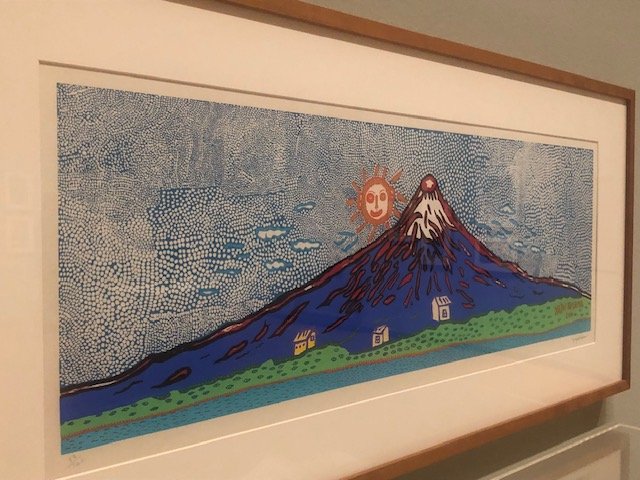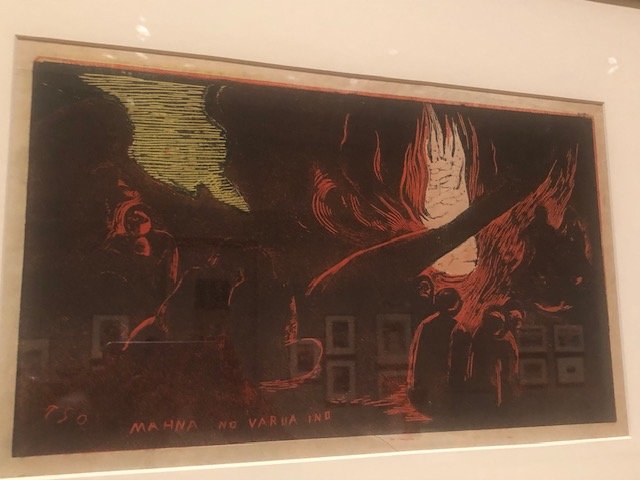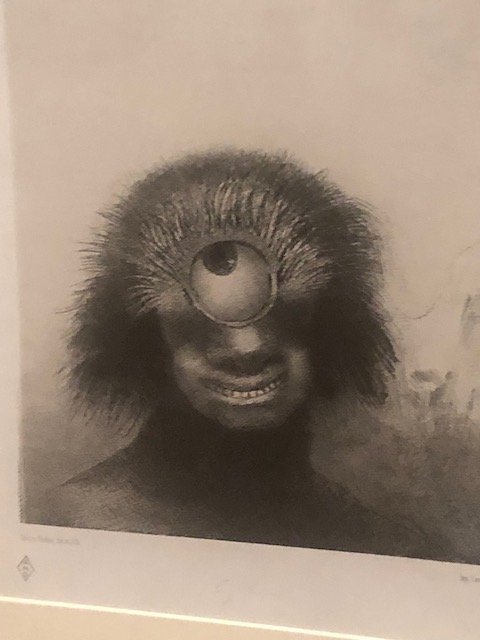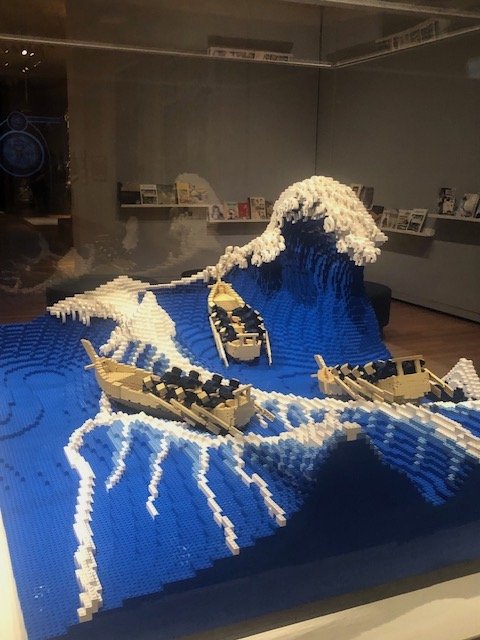Last Sunday, I visited Hokusai: Inspiration and Influence, held at the Seattle Art Museum. Everyone is familiar with Hokusai’s Great Wave (pictured below, the formal title is Under the Wave off Kanagawa from the series Thirty-Six Views of Mt. Fuji —a bit of a mouthful), but his influence on art stretches far beyond just this one piece of work. The exhibit, comprised of works borrowed from the Museum of Fine Arts in Boston, is an exploration of his influences as well as works and artists whom he directly influenced.
One of the more striking things about this exhibit was the diversity of artists he influenced and exactly whom they happened to tuck in amongst everybody else. Single pieces by artists like Yayoi Kusama (of pumpkins and polka dots fame) and Paul Gauguin (the Post-Impressionist who ran off to Polynesia) —people who normally have entire high-profile exhibits dedicated to their work alone —hung unobtrusively on the wall between Hokusai’s work and the work of artists with whom I was unfamiliar. I was thrilled to see a lithograph by Odilon Redon in the section on yokai and ghost stories, as I’ve been really into his work lately as well.



I thoroughly enjoyed the sections of the exhibit on nature and architecture but found myself most intrigued by the sections on the yokai, monsters, and pornography.
So let’s get that out of the way: yes, Hokusai was also a pornographer. His most famous piece of pornography is commonly known as The Dream of the Fisherman’s Wife (the formal title is Woman with Large and Small Octopuses, which is precisely descriptive). This piece was included in the exhibit, but I’m not including the photo here —I’ll leave that to you and Google, if you’re into that. I’ve seen the work before, so it wasn’t surprising. What was surprising was the breadth of work included that it inspired, that were similar but were pointedly not inspired by it, and the thoughts that popped up with some background on the subject. There was the straightforward ‘inspired by’ piece called Sarah and Octopus/Seventh Heaven by Masami Teraoka, for example, which was even more pornographic than the original. But there were also pieces by women.
The fisherman’s wife in the original image was likely an abalone diver, meaning she had a job of her own. Her job was to dive into the water and pry mollusks from the rocks with a knife for food. Because they generally only wore red skirts while working, abalone divers were a frequent subject of erotic fantasies and artwork. The subject of Hokusai’s woodblock print is famously clad not in skirts —or in any other item of clothing, for that matter —but in many-tentacled octopods. It is a print very much suited to the male gaze. An example of a piece similar to The Dream of the Fisherman’s Wife by a woman that changes the context of the octopus entirely is the self-portrait Chastity Belt by photographer Chehalis Hefner. Hefner goes out of her way to distance herself from the Hokusai work, and a quote on the wall that accompanies the photograph in the exhibit explains the difference between Hokusai’s approach (woman as subject) versus how Hefner approaches her work (woman as artist exploring her thoughts on “eroticism, feminism, rape, and overwhelming feelings of engulfment by male energies —all within the context of the identical saline solution of the womb and sea, in which both creatures were born.” It is even more complicated than the pornography, if that’s possible, and I found it striking. I’m still thinking about it, as well as the idea that, even though Hokusai’s subject had a job, she was still only the “fisherman’s wife”, and that his guess about her dreams, when given the choice to dream about anything at all real or imagined, was that she wanted to have sex with more than one octopus at the same time.
Chastity Belt by Chehalis Hefner
The majority of the exhibit was dedicated to people interacting with nature while fully clothed, however, whether as artist or as subject. There were also monsters. There were heroes. There were actors playing monsters and heroes. There were bridges and Lego and hidden frogs. It was a wonderful exhibition and a great day out.






